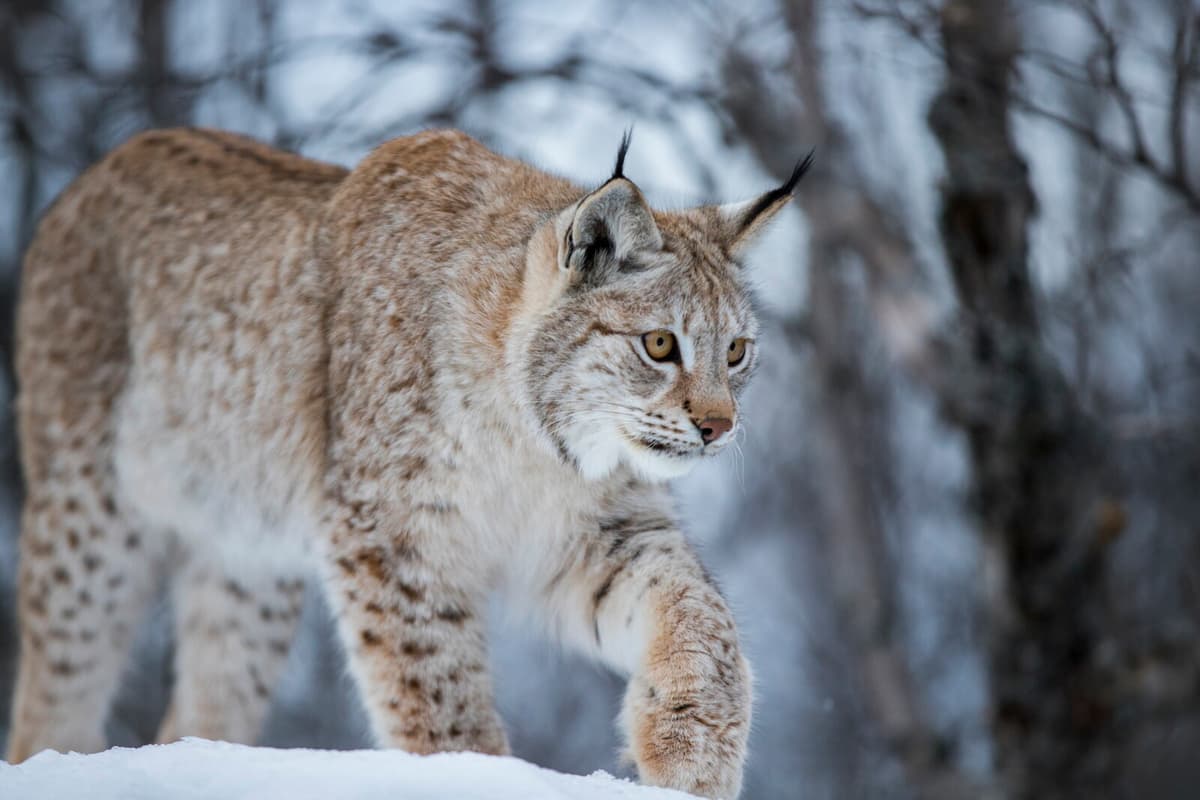The information comes from the Rovbase database, which is managed by the Swedish Environmental Protection Agency and the Norwegian Environment Directorate.
Similar figures have not been recorded since the mid-19th century – but back then, bounties were paid for all species and the unofficial goal was total extermination.
The result was that all species declined sharply, and eventually almost became extinct. In the early 20th century, only remnants of the predator populations remained. When the numbers were at their lowest around 1930, only 130 bears and 100 lynxes remained in the country. The wolf population hit rock bottom a bit later, in the mid-1970s, when only one (!) individual was tracked in the country.
The situation is now completely different. Thanks to various protection measures, the predators have increased significantly since the 1980s, which has also led to increased hunting.
Extremely many are killed
The remarkable thing is that they seem to be holding their own, despite the culling reaching levels that no one would have thought possible just a few years ago.
We've known for a long time that the bear population has an incredibly high growth potential. And the lynxes also seem to be coping with the hunting, says Olof Liberg, predator researcher at the Swedish University of Agricultural Sciences (SLU).
The important thing is that we have control over what we're doing. The key is that we know what we're doing when we decide on hunting quotas. We've had systematic inventories since the 1990s and know how many animals we have in the country, he continues.
If we take the lynx as an example, we had no idea how many there were in the country before. It was just guesswork. Now we know how large the population is and how productive it is.
Yet, the number of predators killed each year is remarkably high, especially when it comes to bears. Over the past four years, 2021–2024, 2,550 bears have been shot in Sweden, which accounts for 32 percent of all bears killed since 1980.
The bears are decreasing
Not surprisingly, the bear population has also taken a hit from this. According to the latest estimate, there are currently (2023) 2,448 bears in Sweden, which is a decline from 3,298 in 2008 when the population seemed to have reached a peak.
The population is now decreasing, which is also the intention, says Jonas Kindberg, researcher at SLU and leader of the Scandinavian bear project, a research collaboration between the Scandinavian countries.
The hunting of predators is largely controlled by the so-called wildlife management delegations at the county administrative boards, which in turn are supposed to take into account certain minimum levels set at the political level in Sweden.
They thought 3,298 bears were a bit too many, and decided that the population should decrease. The current goal is around 2,300 bears. That's where the social carrying capacity lies, i.e., the level that people are willing to accept, according to the wildlife management delegations, says Jonas Kindberg.
We're soon going to reach that goal. The culling must decrease now if we don't want to shoot too many bears. For the time being, the culling is above the growth rate of the population. If the goal is 2,300 bears, we can't shoot more than 200 to 300 bears per year.
Social carrying capacity?
He notes that the social carrying capacity is something entirely different from the biological carrying capacity. If one were to go by the latter, the population size would be determined by ecological factors – food availability, natural mortality, and so on.
We could have 5,000 bears in the country if we let biology set the limit, he says.
Still, he thinks the current management is quite good, considering the various wishes. A compromise, in other words.
However, voices have been raised from several quarters to reduce the hunting of large predators. Many believe it is largely a matter of trophy hunting, and that there is no real reason to hunt, for example, lynxes.
The lynx hunt is a pure concession to a small interest group that wants to hunt for pleasure. Lynxes do extremely little damage to domestic animals in Sweden, so there's no reason to hunt them. Most Swedes don't even know that lynx hunting takes place every year, maybe that's why it can continue, says Magnus Orrebrant, chairman of the Swedish Predator Association.
The association is against annual hunting of bears and wolves as well, and believes that Swedish hunting is not compatible with the EU's species and habitat directive.
The number of large predators in Sweden, 2023–2024:
Bear: 2,448
Lynx: 1,276
Järv: 700
Wolf: 375
Source: SLU
The number of large predators killed, licensed hunting and protective hunting, Sweden, 2015–2024:
Bear: 4,457
Lynx: 1,120
Wolf: 432
Järv: 183
Source: Rovbase





